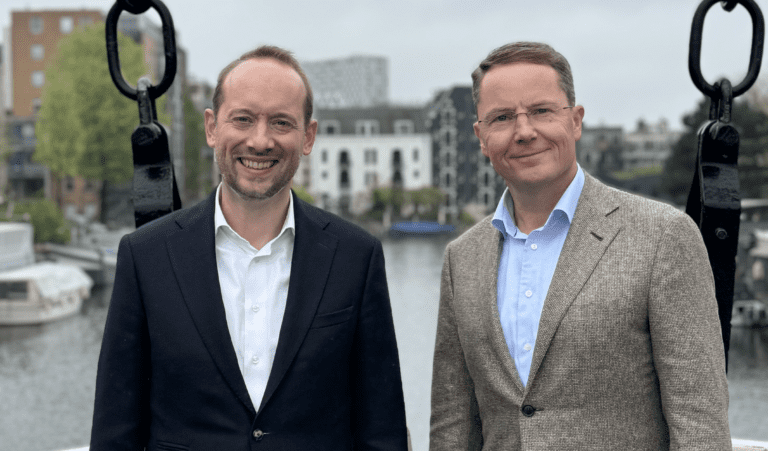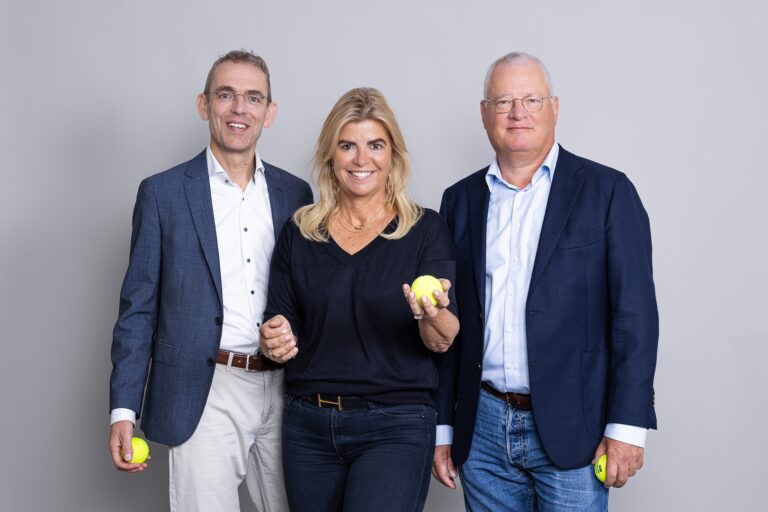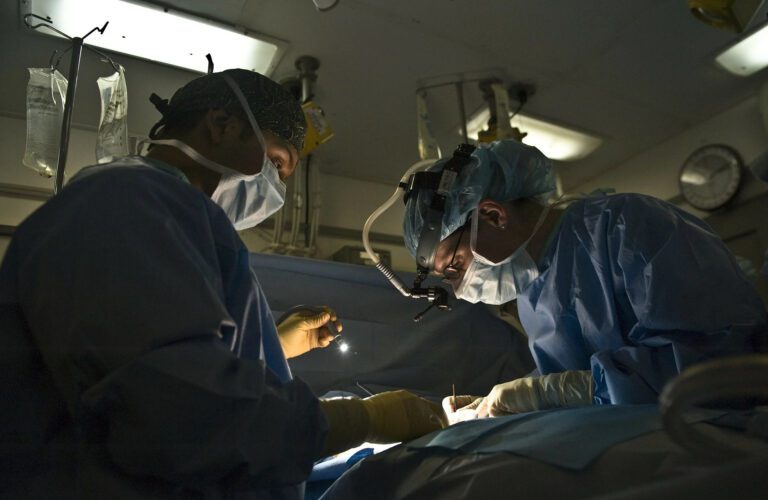
Follow the impact > Mosa Meat, fundamentally reshaping the global food system 🍔
Rubio’s ‘Follow the Impact’ interview series, delves into the passions, motivations, and vision of the exceptional founders we have the privilege of partnering with. We want to inspire you with their amazing impact and growth ambitions, and also share some insights and learnings on the challenges they have to overcome to scale their businesses and create systemic impact.
In this second interview, Maarten Bosch, CEO of Mosa Meat talks about Mosa Meat’s technology and its growing operations, how the cultivated meat industry is evolving, and how they want to fundamentally change the food system by introducing a cleaner, kinder way of making beef.

Mosa Meat in a nutshell
For those who don’t know Mosa Meat, a brief introduction: Mosa Meat is on a mission to fundamentally reshape the food system. Headquartered in Maastricht, The Netherlands and founded in 2016, the founders Mark and Peter introduced the world’s first cultivated beef hamburger in 2013, by growing it directly from cow cells. They are now working towards commercialising cultivated meat, transforming how meat is produced, and bringing it to the masses.
Maarten, please take us back to how it all started
The idea to produce exactly the meat we need, without raising and slaughtering animals, has sparked people’s imagination for many decades. The technology was just never advanced enough to make it happen. Until almost 20 years ago when the Dutch government funded a research project to explore the opportunities of cultured meat. After the program ended, our founders continued to try and make sustainable burgers a reality. Based at the Maastricht University they introduced a proof-of-concept cultivated hamburger to the world (which cost a whopping €250.000, – to produce). And luckily for us – the press loved it.
In 2016 they started Mosa Meat with the goal to solve one of our generation’s biggest challenges, the negative externalities of our growing meat consumption. Crucial technical milestones were reached, like adding fat, removing animal components from the production process, and reducing the cost.
Why is this so important?
Meat has a catastrophic effect on the environment, the consumption of beef from cows alone is responsible for a staggering 8% of GHG-emissions. The industrialized raising of animals for slaughter has detrimental effects on animal welfare, rising antibiotics use, land use and soil & water contamination. Next to all of this the world faces a lot of challenges including vulnerability to supply shocks like the war in Ukraine, greenhouse gas emissions and biodiversity loss. These are serious challenges that will require systems-level changes and cultivated meat is one of the tools that has to be in the tool box.
One prediction by BCG last year projected alternative protein to grow from 2% to 11% of the total animal protein market in 2035 (valued around €290 billion) of which cultivated products would make up 6 million metric tons (around 0.7% of the total animal protein market, valued at €18 billion). Cultivated meat is an important complement to reforms of conventional agriculture, which combined will help us feed a growing planet sustainably.
It’s all about getting that burger to market, and making sure that the future of food is a bit brighter in the process. We can imagine that the road to this point wasn’t easy. Can you describe your ‘point-of-no-return’?
Our ‘point-of-no-return’ was raising our first funding in 2018. It accelerated our first steps from an academic environment to becoming a business. It enabled us to hire the first team of 25 scientists and engineers, and we started moving from the university into the Brightlands accelerator and later our own pilot facility. It can be hard for academic startups to spin out while being set up for success, and we invested in defining the mission, vision, goal setting and creating the right culture.
In 2020 Rubio joined Mosa’s Series B. Setting & reporting on specific impact targets are a condition to be able to get an investment from us. Do you find the impact of the target setting useful?
It has been extremely useful for us to set concrete impact targets. Because on the one hand impact and sustainability are at the core of our business and woven into everything we do – substituting beef with much more sustainable beef. On the other hand, many day-to-day decisions around, for example partnerships or operations, can have an outsized impact on the overall performance of the company. Having concrete impact targets in place makes sure we are aligned internally and externally while we grow.
What is the BHAG and needs to happen to achieve this desired growth?
Our BHAG is to replace beef with beef, at a global scale. For this to happen, we are creating a high quality product that has all the properties consumers expect from beef (see our blogpost for a detailed outline of what that means and how we do this). The cost of production needs to come down and the scale of our operations needs to increase.
What do you need to achieve these goals?
To realise the global impact that we envision, a lot of different parties need to pull in the same direction. This includes governments. So, we are very happy that the country of The Netherlands has recently awarded a grant of €60m to support the cellular agriculture ecosystem, including training programs for a skilled cell ag workforce, increased public research at universities and creating shared scale-up facilities.
What are the biggest challenges in this scaling process?
To bring down production cost and scale up production volumes, we are building a strong value chain with our partners. This includes for example partnering with Nutreco on the production of low-cost cell-feed that is food grade instead of pharma grade quality and partnering up with Esco Aster in Singapore which will enable our first international production expansion. And we are continuously expanding our internal scientific and engineering knowledge needed to scale up. This translates for example into reaching higher levels of maturity of our beef, increasing the efficiency and simplicity of our bioprocesses, and demonstrating our production process in larger and larger vessels. Optimising all of these factors at the same time involves a lot of interdependencies, so it has been important for us to expand our team to now 100+ scientists, which is in fact the largest scientific team working on cultivated meat globally.
Let’s take a look into the future, what are the plans?
In the near future we want to expand our manufacturing capacity. For this we need to work with regulators to receive approval to start selling our beef to consumers. During this regulation process we are working hard behind the scenes to get everything ready for this introduction. That’s why we are working closely with chefs and restaurant owners to put our beef on their menus and we’re partnering with retailers from different countries to define the ideal introduction through supermarkets and other commercial outlets. So, when the government is ready, we are ready to rock.


